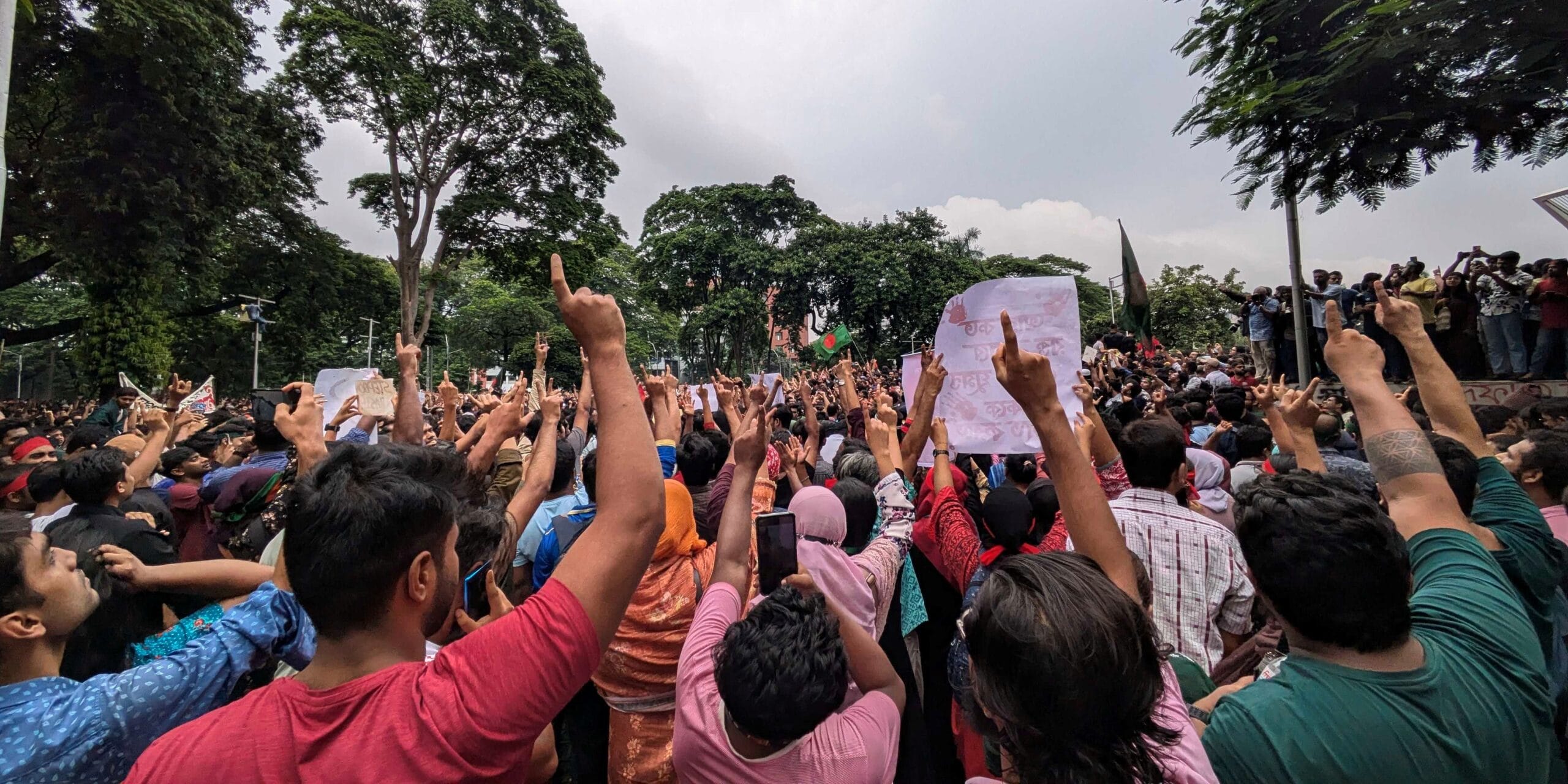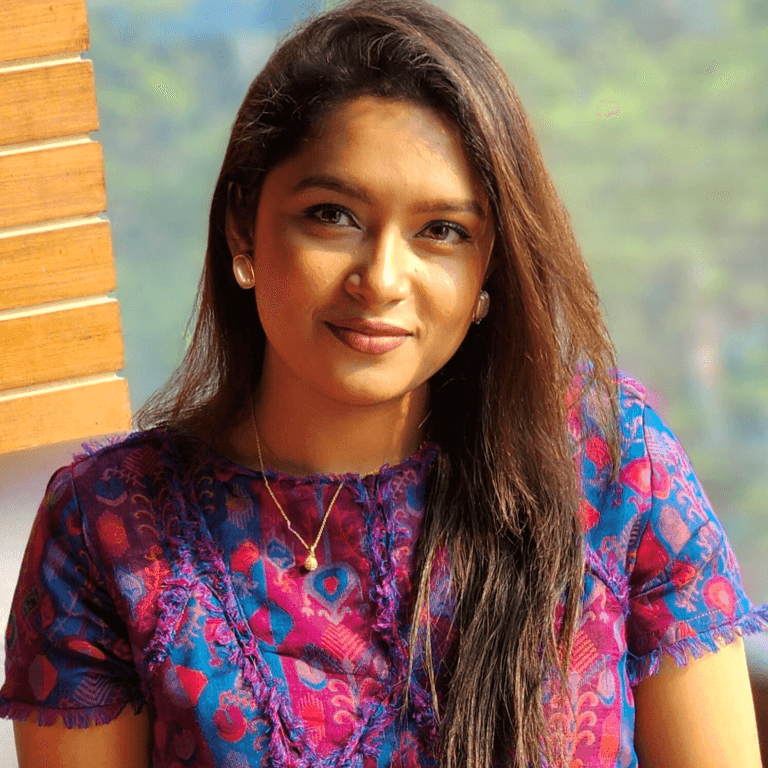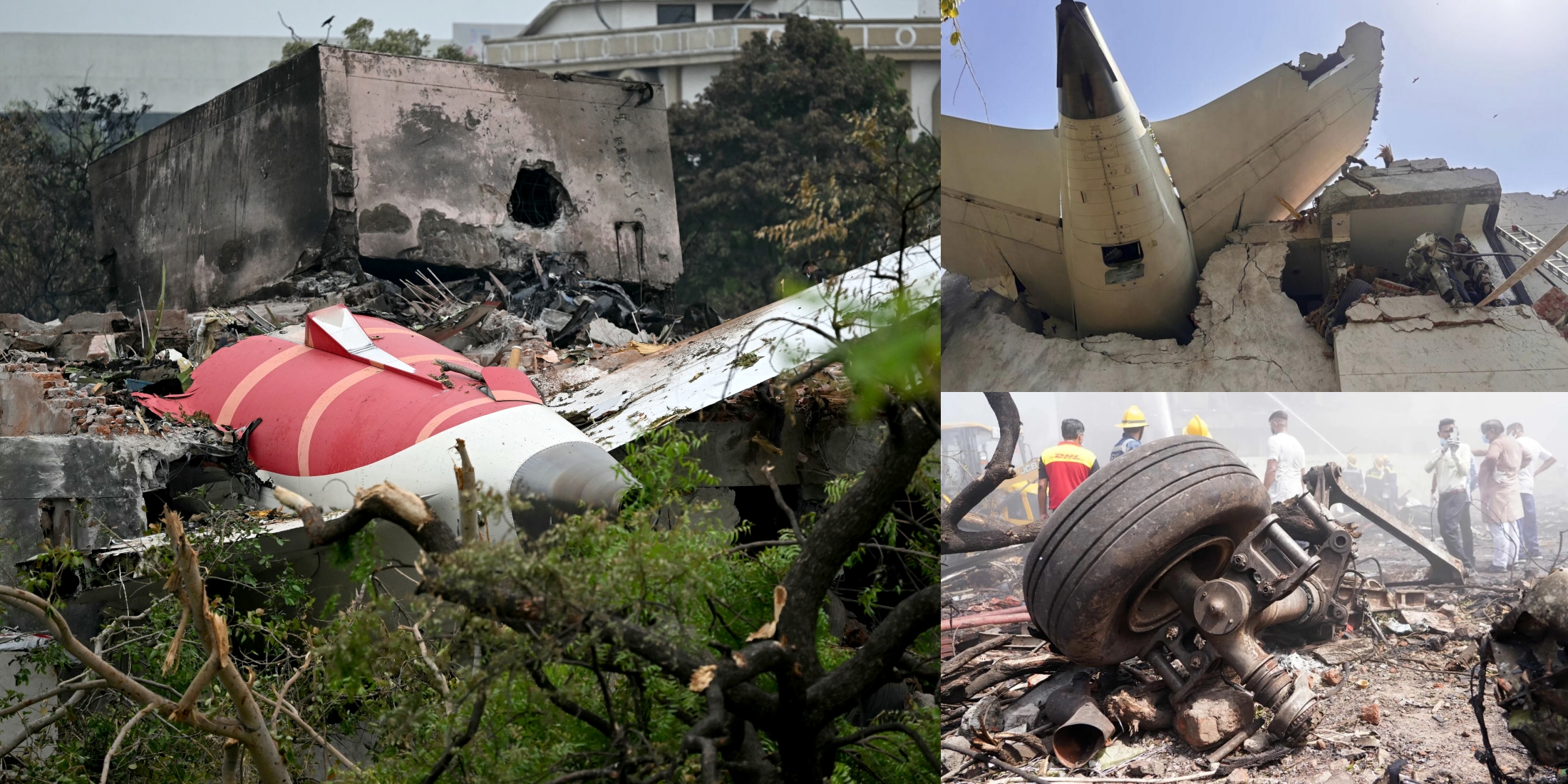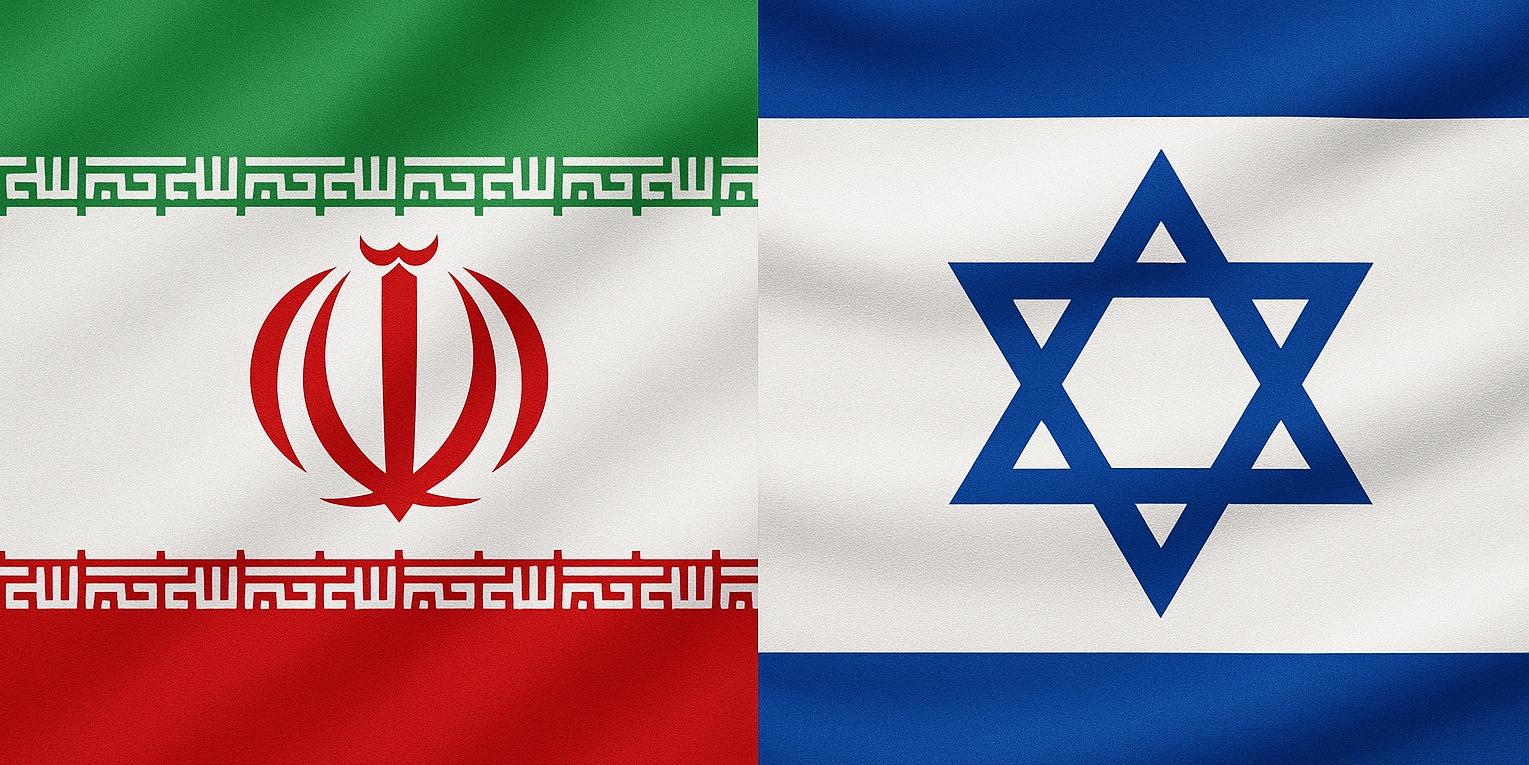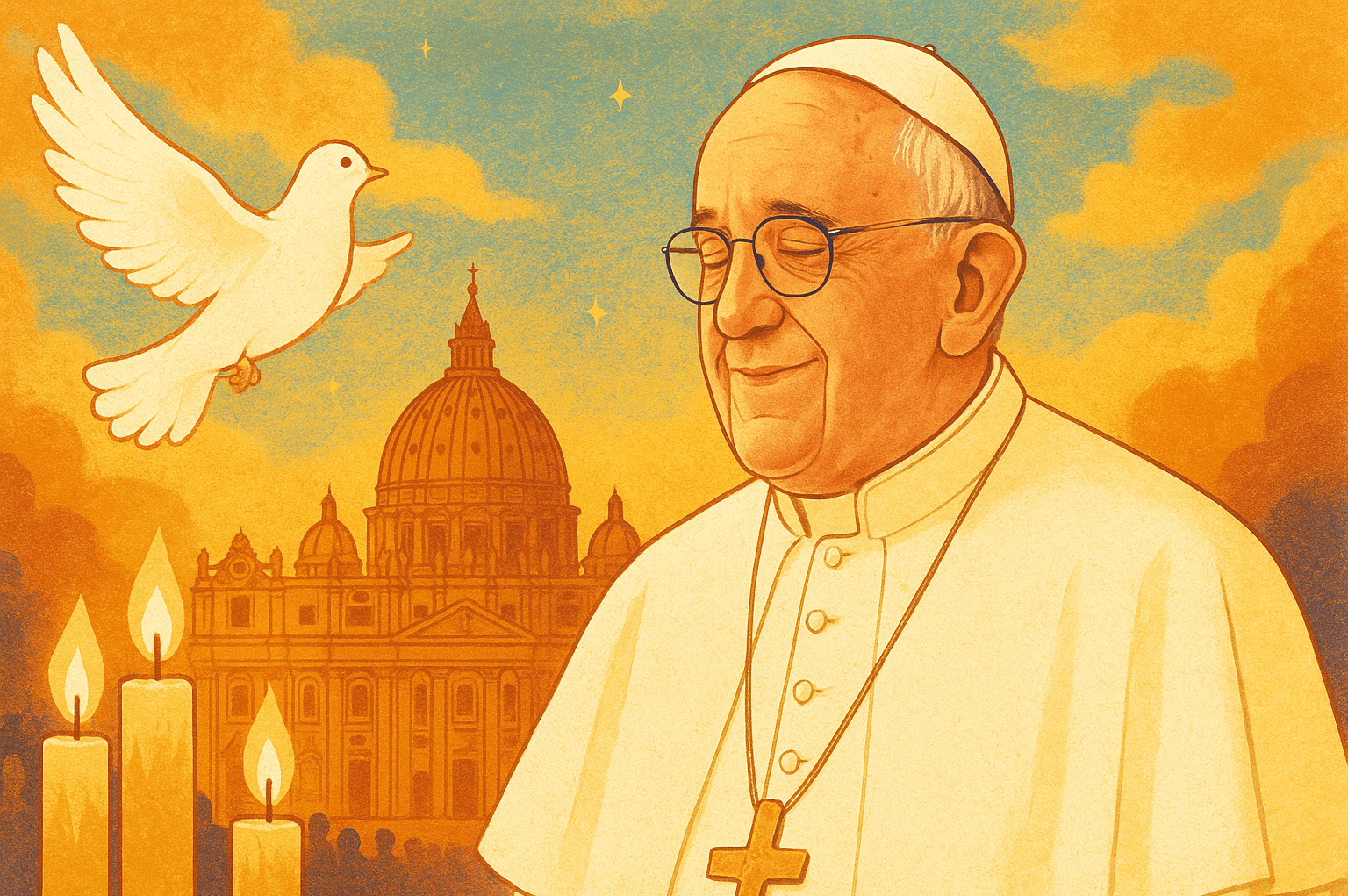The “Anti-discriminatory Student Movement” hit a turning point on August 3, 2024, as the Central Shaheed Minar in Dhaka transformed into a sea of people. Tens of thousands of students and citizens from all walks of life participated in a protest rally against the violent killings and arrests, converging on the iconic monument. In the rally, coordinators of the students’ movement declared a one-point demand for the resignation of Prime Minister Sheikh Hasina and her cabinet members.
Earlier, in a controversial move, six movement organizers were detained and allegedly forced to release a staged statement declaring the movement’s end. However, in a not-so-shocking turn of events, the coordinators eventually disclosed that they had been pressured into making their withdrawal statement.
In the middle of this, the nation collapsed as peaceful quota reform protests erupted into violent chaos. Protesters once again took over the streets nationwide, encountering police crackdowns and attacks by the Chhatra League activists.
Meanwhile, the ruling Awami-led government took firm action to ban Jamaat-Shibir on July 29. In a meeting at Gonobhaban with the leaders of the 14-party coalition, Hasina labeled the ongoing turmoil as “militant acts” and said, “The incidents which are happening in the country, are not political matters, rather a complete act of militants (BNP-Jamaat-Chhatra Dal-Shibir). It is aimed at destroying Bangladesh.”
On the following day, July 30, the High Court expressed its shame over the violence and loss of lives during the quota reform protests and criticized the Detective Branch for keeping 6 protest coordinators in custody in the guise of ‘security reasons.’ Supreme Court lawyer and chairperson of Ain O Salish Kendra, ZI Khan Panna, said, “By what right, under what law, are they (students) being picked up by block raids? We condemn it.” In reply, DB chief Mohammad Harun-Or-Rashid denied the allegation of forcing the quota coordinators to issue the movement’s withdrawal statement. He further warned everyone to abstain from spreading propaganda.
In addition, teachers from Rajshahi and Jahangirnagar Universities expressed their defiance to the government’s oppressive actions towards the students and their protests. Around 12:30 PM, the protesting students of Jahangirnagar University (JU) staged a silent march under the banner ‘Jahangirnagar Against Assaults’ and ‘Students Against Discrimination.’ JU teachers also joined the march, tying red clothes on their faces. During the silent procession, a professor of the Philosophy department, Mahmuda Akand, alleged, “The state is crying crocodile tears today; the state declared a state mourning but finds it difficult to agree on the actual number of martyrs. The state is not bothered yet to identify the actual martyrs.” Subsequently, they held a one-minute moment of silence at a monument near the Fazilatunnesa Hall to commemorate the martyrs of the movement.
On that day, the country observed a government-declared nationwide mourning to honor the 147 individuals (officially reported) who died during violent conflicts; however, unofficial numbers of the death toll are higher. In response, demonstrators launched an online campaign using red bands symbolizing anger and grief to oppose the government-proclaimed mourning. Social media platforms turned into a battleground as protesters changed their profiles to red in support of the movement, and government supporters turned theirs to black.
Meanwhile, Abdul Hannan Masud, one of the movement’s coordinators, announced the ‘March for Justice’ program to be held on July 31 in all the campuses, and streets of the country to emphasize their nine-point demand. The nine-point demand included the resignation of some ministers: the home minister, road transport and bridges minister, education minister, state minister for ICT, and law minister, to take responsibility for all those killed by state forces in the protests. Plus, they demanded the resignation of VCs and proctors of all universities, including Dhaka University, Jagannath University, Jahangirnagar University, Rajshahi University, and Chittagong University, where peaceful protesters were attacked by police forces.
As a part of 31 July’s ‘March for Justice,’ protesters took out a procession in Mirpur, demanding justice against the mass killings, attacks, lawsuits, enforced disappearances, and murders of students across the country. In the Mirpur Banarasi Palli area, around 20 policemen surrounded protesters, while Chhatra League and Jubo League activists gathered nearby in Mirpur-10. Eventually, leading to police intervention, protesters were dispersed.
However, protesters returned with an announcement of a fresh program for the next day (August 1), called ‘Remembering our Heroes.’ Rifat Rashid, a co-coordinator of the Anti-Discrimination Student Movement, in a press conference, said, “We will call for a United Nations investigation into the violence and reiterate our nine-point demands during tomorrow’s program.” He also urged writing any content online in remembering the martyrs and using the following hashtags: #JulyMassacre, #RememberingOurHeroes, etc.
Amid this, hundreds of HSC students boycotted their exams until fellow examinees were not released from police custody. Students took out their frustrations on the walls of Dhaka with digital images of the victims, graffiti, creative writings, and banners.
On Thursday, August 1, at around 2:30 PM, prominent civil society members held a sit-in program outside the DB office, urging them to stop harassment and arrests of protesting students in the name of safety. Earlier on July 30, they issued an ultimatum for the unconditional release of six coordinators of the quota reform movement within 24 hours.
In the program, Asif Nazrul, a professor at Dhaka University, said, “Not only public universities but students of the private universities were attacked inhumanly. They entered the campuses and beat the students brutally.”
The six organizers of the quota reform movement were released several days after being detained by the Detective Branch (DB) of the Dhaka Metropolitan Police (DMP). The DB chief stated that the release was voluntary; however, the coordinators disclosed that they had to go through a hunger strike while in custody against the forced detention and fabricated statements. After being released from DB custody, Hasnat Abdullah stated over the phone, “Before the release, we staged a 36-hour strike inside the DB office.”
Following the day after their release (August 2), the six coordinators revealed that they were forced to withdraw their movement in police custody. “We did not voluntarily give the video statement broadcast from the DB office withdrawing the movement. No decision on the anti-discrimination student movement can come from the DB office,” they said. They further assured the continuation of the movement against the repression by the government.
Around 8 PM, two coordinators, Rifat Rashed and Mahin Sarker, announced a protest march pressing a 9-point demand on August 3 and a “total non-cooperation” movement for an indefinite period from August 4.
At the end of the day, Sheikh Hasina assigned three senior Awami League (AL) leaders, Mahbubul Alam Hanif MP, Jahangir Kabir Nanok MP, and AFM Bahauddin Nasim MP, to have discussions with the quota reform movement coordinators. As a last-ditch effort, Sheikh Hasina agreed to fulfill the demand of students. In a meeting with Peshajibi Samonnoy Parishad on August 3,
“Doors of Ganabhaban are open. Whenever the protesters want to talk to resolve the issue, I am ready to sit with them,” she offered.
However, in response the coordinators refused to sit with the government, saying that they were forced to meet the Prime Minister and suspend the movement while detained at the DB office. Asif Mahmud, another coordinator of the movement, wrote on Facebook, “We are ready to pay the price of an uncompromising stance, even if it means death. We call for the participation of every citizen of Bangladesh in the student-citizen uprising.”
As the movement reached a historic peak, the Central Shaheed Minar overflowed with thousands of protesters on August 3. From 11:00 AM, despite the rain, students and citizens began gathering in the processions. Since morning, thousands of student protesters blocked highways in Shahbagh, Mirpur-10, Rampura, Badda, and Science Lab intersections in the capital. At 2:45 PM they started marching towards Shaheed Minar.
By 4:15 pm, every corner of Shaheed Minar was filled with diverse crowds demanding the government’s resignation, chanting slogans, “1234, Hasina, you leave your throne (1234 Hasina tui godi char),” “one demand: Hasina must go,” down with Hasina,” etc. Aziz Miah, a rickshaw puller, said to the Daily Star, “Our brothers were killed when they protested. How long will we remain silent?” At Dhaka’s Rabindra Sarobar, musicians also rallied under the banner of ‘Get Up, Stand Up,’ supporting the protesters.
“We have reached a decision about a one-point demand,” Nahid Islam announced around 5:30 PM.
As of August 3, the government revealed the death toll at around 150, while most media estimate it to be over 211. Envisioning a new Bangladesh without dictatorship and fascism, the students also demanded the abolition of the entire cabinet. As darkness descended, the protesters’ determination burned brighter than ever. The students’ voices rang out across the city, chanting in unison: “July lives on until we are free.”

